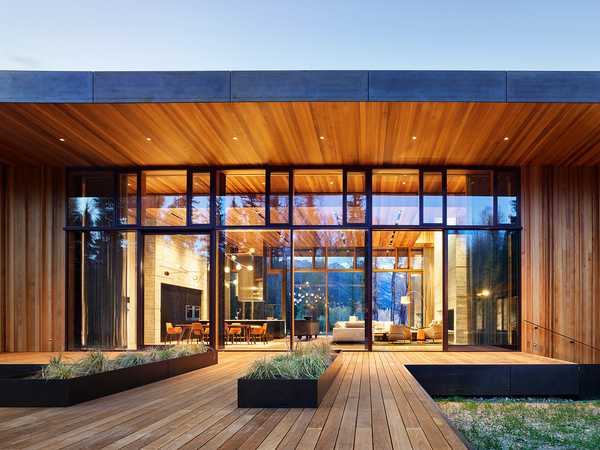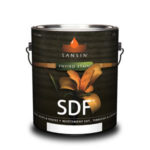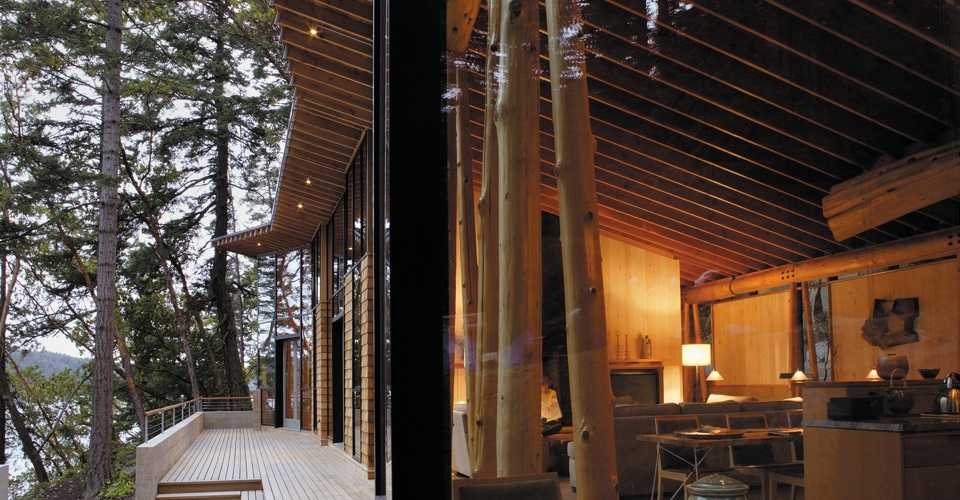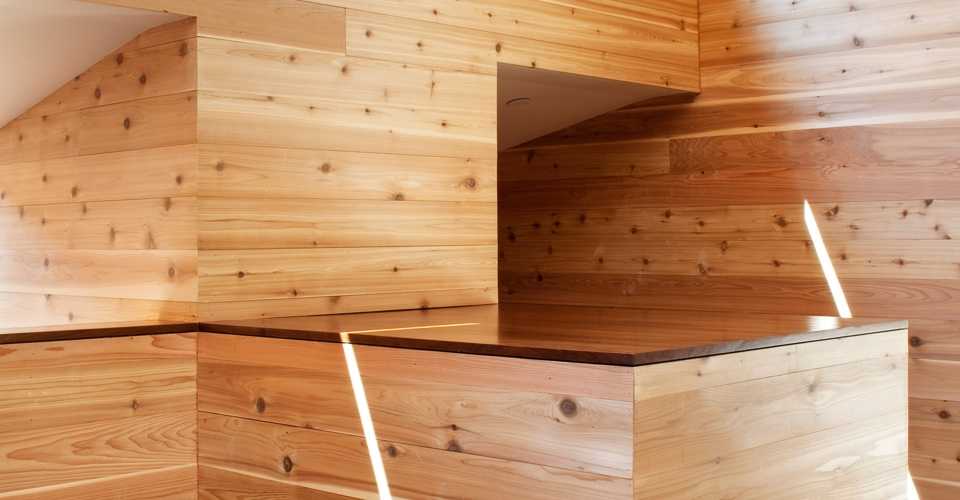Back
Back
Back
Back
Back
Back
Back
Back
Back
Back
USA & Canada
Choosing a Finish for Western Red Cedar Siding

In this section
Table of Contents

Selecting a Finish
Choosing The Right Finish
Curb appeal starts with cedar siding. There are so many different grades and profiles to choose from to suit every style of home. Whether you want to create a warm textured shadowy effect or keep your lines clean and polished, there are many western red cedar siding products that can fulfil your desired effect.
Once you choose your siding profile, the next step is deciding on the right finish for your exterior. This mainly comes down to personal preference and the look you want to achieve. Revered as nature’s most versatile building material, Western Red Cedar accepts and holds a wide range of finishes beautifully, which means you can finish your home however you like – be it a modern home stained black, an East Coast beach home painted white or a West Coast contemporary home with a natural finish. For more ideas, check out our siding inspiration gallery to see how award-winning architects are using cedar in their projects.
Below are the top four finishes for Western Red Cedar Siding:
- Opaque coatings – paints and solid-color stains
- Semi-transparent stains
- Natural finishes such as transparent stains
- Bleaching or Weathering Products
Important Note: All these types of finishes can be factory applied for optimal results. But if you choose to finish your siding on site, follow best practices and apply products to all six sides of each board.
Using a Primer
Priming Cedar Siding
While many homeowners prefer to showcase Western Red Cedar’s beautiful texture and color with a natural finish; some prefer to use a solid finish. This can be just as beautiful – think New England cottage and traditional craftsman home. Both styles are perfectly suited for a vibrant coat of color. Whether it’s solid stain or paint, Real Cedar offers a complete list of siding application tips. The first rule of thumb? Use a primer.
Reason being Western Red Cedar has naturally occurring extractives – it’s what gives the wood such that stunning tonal range, and it’s just one of the many benefits of cedar. But without a proper base coat, those same extractives may discolor opaque finishes such as latex paints and solid-color stains. That’s why it’s always best to use a stain blocking primer, preferably alkyd-oil and water-based formulations. Alkyd-oil based primers usually offer the best shield against discoloration by water-soluble extractives.
The label on the container should indicate that the coating is recommended for use as stain blocking primer for Western Red Cedar.
Primer Recommendations
- Stain blocking primers are available in alkyd-oil or water-based formulations.
- For better protection against staining, your best bet is an alkyd-oil based primer.
Finishing Product Recommendations
 Sansin Precision Coat finishes are also highly recommended for Western Red Cedar siding. The SDF is a one-coat formula that provides strong, long-lasting protection for cedar siding. For added protection, complete with a layer of SDF Topcoat on siding, trim and timbers.
Sansin Precision Coat finishes are also highly recommended for Western Red Cedar siding. The SDF is a one-coat formula that provides strong, long-lasting protection for cedar siding. For added protection, complete with a layer of SDF Topcoat on siding, trim and timbers.
Another option is Sansin Precision Coat Factory ENS. This is an extremely durable two-coat finish for exterior vertical and horizontal surfaces where a medium or high lustre film forming finish is desired. It offers exceptional performance on most substrates including dry wood, metal or composites. For bare wood, always use an adequately pigmented undercoat such as Dec, Classic or SDF.
Paints and Solid Stains
Paints and Solid Stains
Painting Cedar 101
Compared to other finishes, paint offers the greatest protection for western red cedar siding against the elements. And while cedar siding accepts, holds and showcases all types of paints beautifully, your best choice is a 100% acrylic latex formula. They outperform other types of paints in all types of weather.
Solid-Color Stains
As with paints, solid-color stains shield WRC from damage caused by ultraviolet light and water. These stains come in a wide array of tints that defuse cedar’s naturally occurring brilliance, but unlike paints you still get all the warm texture of wood shining through. It’s important to keep in mind, though, that unlike non-penetrating stains, these finishes form a film. These stains come in latex and oil-based formulas. When it comes to recommended usage, DO apply a stain-blocking primer before applying solid color stain but DON’T use an oil-based solid color stains over a latex primer.
Important Note: As with paints, 100% acrylic latex stains are recommended.
Transparent Finishes & Stains
Transparent and Semi-Transparent Stains
Transparent Stains
Let your wood’s lustre shine through. If you love wood’s natural characteristics but want to provide some protection against the elements, transparent stains are the way to go. These non-tinted products highlight cedar’s natural beauty while providing water repellency. Look for products that contain mildicide and fungicide. This will help prevent future growth of mildew and fungi and prolong the wood’s service life.
Among the different types of transparent stains, there are waterborne and solvent-born formulas. Both of are completely unpigmented, which means they require regular reapplication because they don’t offer any protection against damage caused by the sun’s ultraviolet rays and moisture. But like all transparent stains, they can be refinished with relative ease.
Semi-Transparent Stains
Solvent-borne, oil-based, semi-transparent, stains penetrate the wood surface. They do not form a surface film like paints or solid stains. For Western Red Cedar products, they are the best choice in terms of offering protection, yet they still showcase the wood’s natural beauty. They can be used on both smooth and textured boards but absorb better and last longer when applied to textured surfaces. They do contain pigments that add color – including cedar tones. They will increase the service life of your siding and protect if from damage caused by ultraviolet rays. If applied according to best practices and depending on design and exposure to weather, these stains can last 3 – 6 years before having to be reapplied.
Latex Semi-Transparent Stains
With latex semi-transparent products, you can achieve the same look as solvent-borne ones. However, these stains tend to form a film and do not penetrate the wood. This can lead to flaking and shorter service life. But from an environmental standpoint, latex formulas are a good option.
Bleaching and Weathering Products
These products are designed to provide the weathered look and do so sooner and more evenly than natural exposure to sunlight. They are lightly tinted with either grey or brown pigments, which mute the natural coloration in Western Red Cedar, accelerating the weathered appearance. They are available in oil-based and latex formulas and like all finishing products, should be applied to all six sides of each board. Pay special attention to the ends of siding and trim as well raw ends or end cuts, and be sure to touch up any raw ends with either a base coat or primer coat. This will provide color consistency as well as equal water repellency to all six sides.
Important Note: With all types of finishes, the manufacturer’s recommendations should be followed. Western Red Cedar’s excellent finishing characteristics cannot compensate for finishing products that are unsuitable, of inferior quality, or improperly applied.
* HOWEVER, you can ignore manufactures’ recommendations to wait six months to a year prior to applying their products.
Factory Finishing
Purchasing Factory Finished Siding
Pre Finished Siding
For optimum performance, the WRCLA recommends that Western Red Cedar is preprimed or pre-finished prior to job site delivery. Factory-priming, as the name implies, is performed in an industrial setting where a machine coating process applies a coating to all six sides of each board. The coated boards are then dried prior to shipment to the job sites. Pre-primed siding and trim boards delivered to a job site should be kept dry and clean prior to installation. All field cuts should be re-sealed with a primer prior to the boards being installed. Top coating should be completed as quickly as possible as most primers are not intended to be exposed to natural weathering for more than 90 days.
Factory–finishing is similar to the above process, however, it allows for the additional application of one or two topcoats of acrylic latex paint, solid stains or natural stains in job lot quantities and in the colors selected by the builder/homeowner. It is important not to overdrive nails during installation of factory finished siding, as this will damage the surrounding wood and coating. Overdriven nails must be remedied immediately by filling the depression with exterior grade wood putty specifically designed for this purpose.
Touch-up any repairs or field cuts, taking care not to smear the top coat. Properly done, factory priming/finishing provides:
- the application of a uniform coating at the recommended coverage of the primer/stain to all six surfaces of each piece (face, back, edges andends)
- a controlled environment to permit proper curing of the finish
- the wood with a coating to protect it from exposure to sunlight (UV degradation) and surface contamination by mildew and dirt
- an elimination of lap marks, streaks and shrink lines after installation
- an ability to install products at any time of the year
- a product that often comes with a coating warranty
© 2025 All rights reserved
Gatsby Website Development by Jambaree


